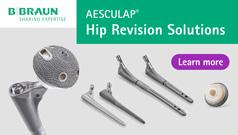Expert Corner
Column Osteotomies for Complex Spinal Deformities: Vertebrae Column Resection (VCR)
 Oheneba Boachie-Adjei
Oheneba Boachie-Adjei
Introduction
Patients with complex spinal deformities present with a very difficult and challenging problem and potential surgical risks. However, when the benefits outweigh the risks due to patient’s symptoms of pain, neurological deficit and spinal imbalance; complex procedures have to be undertaken to realign patients’ spine, provide balanced correction and also provide pain relief and improve function.
For sagittal plane deformities, a posterior pedicle subtraction osteotomy (PSO) which is a posterior closing wedge osteotomy can be performed to achieve the desired correction. For multi-planar deformities, such as kyphoscoliosis, one would require a posterior vertebrae column resection (VCR) with posterior segmental instrumentation to correct both sagittal and coronal plane deformities.
Circumferential surgical procedures and osteotomies can also be performed with a posterior column shortening. However, this will require a formal anterior approach and has therefore lost favour when compared to posterior only vertebrae column resection which is also a circumferential procedure but done only with the posterior approach. The most common cause of sagittal imbalance is iatrogenic flatback from distraction instrumentation in the lower lumbar spine such as the use of the “Harrington Rod Technique”. Other causes include post traumatic, neuro-muscular, congenital or degenerative disorders.
Indications and preoperative planning for PSO or VCR are to enable patients assume a more upright posture, balance shoulders over the pelvis, restore horizontal gaze, relieve compression of abdominal contents and improve breathing and appearance. Before undertaking such a procedure, diagnostic imaging including plain x-rays, CT scans and MRIs are required to visualise the body anatomy as well as the spinal canal for assessment. Full length lateral radiographs are utilised to assess pelvic parameters including the pelvic incidence, sacral slope pelvic tilt and the pelvic incidence - lumbar lordosis mismatch which should be >10°. Pelvic fixation may be needed to provide strong distal foundation over a long construct above T12 in patients with lumbar-sacral deformity or significant fixed sagittal malalignment which requires fixation to the pelvis. These are usually adult patients who have either had a previous surgical procedure with degeneration or untreated sagittal deformity from an infectious process such as TB, ankylosing spondylitis or a previously fused lumbar spine resulting in a flat back.

Fig 1: Pre-operative AP and Lateral 3D-CT Scan and plain radiographs showing the complex vertebral translational deformity typical of a severe (Gamma) type deformity or hyperkyphosis.
Operative procedure for Posterior Vertebral Column resection (VCR)
The technique described below is my preferred treatment for patients with thoracic and lumbar hyperkyphosis or kyphoscoliosis. The patient is placed prone on the four-poster frame and no provision for spinal extension is made. Patients who have been in long term traction can also be placed in traction with weights at the head and both lower extremities intraoperatively. To do this, one needs to obtain spinal cord monitoring baseline with the patient supine, after positioning and following application of traction. For kyphoscoliosis, routine exposure is performed and segmental instrumentation is placed at the desired levels, proximally and distally with the exception of the apex. The apical vertebra is identified and wide exposure is performed proximally, distally and laterally. The peri-apical ribs are exposed to about 2 inches laterally. The transverse processes and about 3-4 cm of the proximal part of the peri-apical ribs are excised and the pleura is swept away gently from the lateral vertebra wall with peanut dissectors. Prior to this in the thoracic region, it is expedient to identify and ligate the neurovascular bundle. If one sacrifices the intercostal nerve roots, adequate exposure of the lateral vertebral margin is provided for subsequent vertebral body dissection and the costo-transversectomy can be performed for malleable retractors to be placed anterior to the vertebral body from both sides. In the lumbar region, a VCR will require preservation of the nerve roots.
Having exposed the lateral wall of the vertebral body, the resected vertebra is identified, the disc above and below are removed. A wedge resection can be performed with an osteotomy for hyper-kyphosis. This can be done on both sides, moving the temporary rods from side to side, as one works from one side to the opposite side. Having completed a significant resection of the vertebral body and disc, or a wedge resection in hyperkyphosis, decancellation is carried out all the way to the anterior margin with burrs or curettes leaving the anterior ligament intact as a tether. The posterior wall is left alone until laminectomy is performed. I prefer performing laminectomy last since it will require exposure of the spinal canal, increase epidural bleeding and therefore, in an attempt to save blood, this is done last. Moreover, for a patient who is not neurologically stable, prior to the laminectomy, the procedure can be halted and staged with total destabilisation of the column.
Once laminectomy is performed, you have passed the point of no return and have to continue the surgery. Having completed the anterior wedge or vertebral body resection with the laminectomy performed, neurologic elements are then circumferentially exposed in the surgical field. The medial pedicle walls are resected down to the base. The posterior wall is then thinned with a curette or diamond burr. Temporal rods which are placed can be utilised for the correction. Once the posterior wall is removed by impaction, closure of the osteotomy side can be performed partially and then followed by anterior column lengthening with in situ benders of the temporary rods. We have utilised a proximal and distal foundation attached to intermediary rods as the corrective system in most of our cases. This provides good distribution of stresses on the foundations and also utilising the entire proximal distal fixation as a foundation for apical correction of the kyphosis or kyphoscoliosis. Each compression to close the posterior column is accompanied by anterior distraction so as to keep the cord tension uniform without excessive buckling of the spinal cord with compression. Once the desired correction is achieved, the temporary rods can be exchanged sequentially. The anterior column void or space that had been created with the anterior column lengthening is then filled using titanium mesh cage loaded with local auto-grafts. The final compression over the cage is then carried out to secure it in place. If there is more than 1cm of osteotomy gap remaining, then the rib graft that has been removed in strips can be placed over the osteotomy site. Reported anticipated main correction in the coronal plane, ranges from 53%-62% and 45-53% in the sagittal plane [1-6]. The technical details outlined concerning lumbar root preservation, temporal rod application, adequate number of fixation points proximally and distally with a 4 rod technique also applies for pedicle subtraction.

Fig 2: Intraoperative exposure. Pedicle screw insertion shown in figure to the left.

Fig 3: Two intra-operative images showing the partial correction with anterior distraction using a distractor and a temporary rod replaced with a permanent rod. The right image showing the 4 rod construct with a mesh roof protecting the exposed spinal cord.
Post-operative Management
Depending on the stability of the construct, the patient may be immobilised in a Thoraco-lumbosacral orthosis for additional support and comfort. Due to the cancellous bone contact at the vertebral body level for PSO, pseudo arthrosis is not often encountered. The use of 4 rods construct at the 3 column osteotomies site has reduced the incidence of rod failure.
Reported Outcomes
Various validated instruments have been utilised to assess patients’ outcomes and to identify predictive factors. Pain, function and self-imaging improvement are high in most series but in general remain below the population’s norms. Satisfaction reported with the operation varies from 73-83% [1-6].
Conclusion
Vertebral column resection procedures are effective methods for restoring spinal alignment and providing biomechanical stability. Most patients are satisfied, particularly when balance is achieved. The high complication rate mandates a careful assessment of the potential risks and benefits before undertaking a major reconstructive procedure.
The author's experience with hyperkyphosis and severe kyphoscoliosis is encouraging in terms of achieving correction of the deformity. Patient selection, surgeon experience and facility resources are all factors that have to be taken into consideration to achieve the desired results.

Fig 4: Pre and post-operative posterior and lateral views of the patient showing the pre-operative deformity and the post-operative correction with restoration of sagittal alignment and level shoulder over level pelvis with lengthened torso.

Fig 5: Pre and post-operative side-by-side radiographic imaging showing the permanent rods in place; 4 rod construct with a fusion from T2 to L3 and a lateral view showing the sagittal restoration and anterior cage placement at the vertebral resection site.
- Auerbach JD, Lenke LG, Bridwell KH, Sehn JK, Milby AH, Bumpass D et al. Major complications and comparison between 3-column osteotomy techniques in 105 consecutive spinal deformity procedures. Spine (Phila Pa 1976) 2012;37:1198-210.
- Berven SH, Deviren V, Smith JA, Emami A, Hu SS and Bradford DS. Management of fixed sagittal plane deformity: results of the transpedicular wedge resection osteotomy. Spine (Phila Pa 1976) 2001;26:2036-43.
- Booth KC, Bridwell KH, Lenke LG, Baldus CR and Blanke KM. Complications and predictive factors for the successful treatment of flatback deformity (fixed sagittal imbalance). Spine (Phila Pa 1976) 1999;24:1712-20.
- Lenke LG, Newton PO, Sucato DJ, Shufflebarger HL, Emans JB, Sponseller PD et al. Complications after 147 consecutive vertebral column resections for severe pediatric spinal deformity: a multicenter analysis. Spine (Phila Pa 1976) 2013;38:119-32.
- Lenke LG, Sides BA, Koester LA, Hensley M and Blanke KM. Vertebral column resection for the treatment of severe spinal deformity. Clin Orthop Relat Res 2010;468:687-99.
- Thomasen E. Vertebral osteotomy for correction of kyphosis in ankylosing spondylitis. Clin Orthop Relat Res 1985:142-52.


















